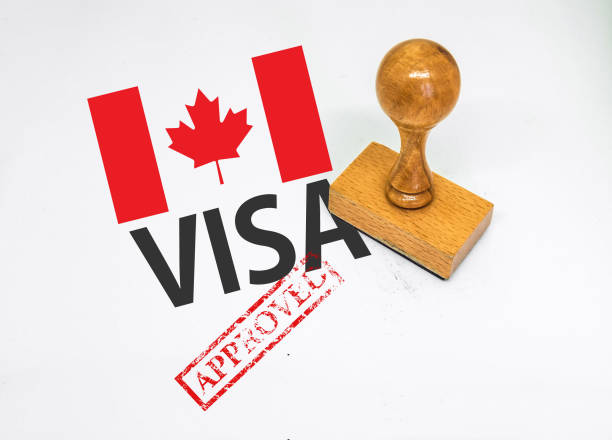EASIEST AND SAFEST WAYS TO MOVE TO CANADA-PRO GUIDE
Moving to Canada is a dream that many individuals and families around the world share. With its exceptional quality of life, diverse culture, and abundant opportunities, Canada stands as an inviting destination for those seeking a fresh start and new horizons. However, navigating the complex world of immigration can be overwhelming, especially when considering factors like ease and security. Thankfully, there are pathways that cater to different profiles and circumstances, making the process both accessible and secure. In this blog post, we will explore the seven easiest and safest ways to move to Canada. From skilled worker programs to family sponsorships, these pathways offer a variety of options to suit different backgrounds and aspirations. Whether you’re a skilled professional, an entrepreneur, a student, or someone seeking to reunite with family, these avenues provide a clear route to making your Canadian dream a reality.
1) Express Entry System
When it comes to immigrating to Canada, the Express Entry system has emerged as one of the most efficient, straightforward, and secure ways to make your dream a reality. Designed to attract skilled workers who can contribute to the Canadian economy, the Express Entry system offers a swift pathway to permanent residency. Let’s dive into the details of this innovative program and understand why it’s considered one of the easiest and safest ways to move to Canada.
Understanding the Express Entry System
The Express Entry system is a points-based immigration system that manages the applications for three federal economic immigration programs:
Federal Skilled Worker Program (FSWP): This program is tailored for skilled workers with foreign work experience who intend to move to Canada permanently. Candidates are assessed based on factors like age, education, work experience, language proficiency in English or French, and adaptability.
Federal Skilled Trades Program (FSTP): For individuals with trade skills and work experience in specific occupations, the FSTP offers an avenue to permanent residency. Requirements include proficiency in English or French, a valid job offer, and relevant work experience.
Canadian Experience Class (CEC): Designed for those who have already gained valuable work experience in Canada, the CEC provides a path to permanent residency for candidates who are already familiar with Canadian society and the labor market.
How Does the Express Entry System Work?
The Express Entry system functions on a Comprehensive Ranking System (CRS), which assigns points to candidates based on various factors. These factors include age, education, work experience, language skills, and adaptability factors like having a valid job offer or Canadian education credentials.
Candidates create an online Express Entry profile and are entered into a pool of potential applicants. The highest-ranking candidates are issued Invitations to Apply (ITAs) for permanent residency during regular draws conducted by Immigration, Refugees and Citizenship Canada (IRCC). Once an ITA is received, candidates have 60 days to submit a complete application for permanent residency.
Why Choose the Express Entry System?
Efficiency: The Express Entry system is designed to be efficient, with most applicants receiving an ITA within six months of entering the pool. This speed is particularly appealing for those eager to begin their Canadian journey.
Transparency: The points-based system provides transparency, allowing candidates to assess their chances of receiving an ITA based on their CRS score. Regular draws are conducted, and the minimum CRS score required for an ITA is communicated, providing a clear understanding of the competition.
Flexibility: The system offers flexibility, allowing candidates to update their profiles with new information, such as improved language test results or additional education credentials. This flexibility ensures that candidates can continue enhancing their profiles even after entering the pool.
Comprehensive Evaluation: The Express Entry system evaluates candidates holistically, considering multiple factors such as education, work experience, language skills, and adaptability. This comprehensive approach allows a diverse range of individuals to qualify.
Provincial Nomination Boost: Provincial Nominee Programs (PNPs) are closely linked with the Express Entry system. Obtaining a provincial nomination can significantly boost a candidate’s CRS score, increasing their chances of receiving an ITA.
Benefits of Express Entry System
Streamlined and efficient process.
No specific job offer required.
Points awarded for various factors, including age, language proficiency, education, and work experience.
2) Provincial Nominee Programs (PNPs)
When it comes to moving to Canada, one size does not fit all. Each province and territory has its unique economic and demographic needs, and the Provincial Nominee Programs (PNPs) have been strategically designed to address these requirements. Considered one of the easiest and safest ways to move to Canada, PNPs offer a tailored approach to immigration that aligns with your skills, qualifications, and the specific demands of a particular region. Let’s delve into the intricacies of PNPs and understand how they provide a pathway to your Canadian dreams.
Unveiling Provincial Nominee Programs (PNPs)
Provincial Nominee Programs (PNPs) are immigration pathways that allow Canadian provinces and territories to nominate individuals with skills and qualifications that meet their specific labor market needs. These programs are in place to attract talents that can contribute to local economies and address regional shortages in various sectors.
How Do PNPs Work?
Exploring Eligibility Criteria: Each province and territory has its own set of eligibility criteria, targeting various occupations, skills, and education levels. These criteria are designed to ensure that nominated candidates align with the specific needs of that region.
Application Process: Candidates interested in PNPs must first identify a province or territory that matches their skills and qualifications. Upon meeting the eligibility criteria, candidates typically submit an Expression of Interest (EOI) or an application to the provincial government. Successful applicants are issued a provincial nomination.
Comprehensive Ranking System (CRS) Boost: One of the key advantages of receiving a provincial nomination is the boost it provides to your Comprehensive Ranking System (CRS) score in the federal Express Entry system. This significantly increases your chances of receiving an Invitation to Apply (ITA) for permanent residency.
Invitation to Apply (ITA): With a provincial nomination, candidates are often given priority in Express Entry draws, resulting in a higher CRS score and an increased likelihood of receiving an ITA for permanent residency.
Benefits of Provincial Nominee Programs (PNPs)
Tailored Pathway: PNPs allow you to align your immigration journey with your specific skills, work experience, and qualifications, increasing your chances of success.
Enhanced CRS Score: A provincial nomination provides a significant boost to your CRS score, effectively improving your ranking in the Express Entry pool.
Access to Regional Opportunities: PNPs enable you to tap into job opportunities and industries that are in high demand within a specific province or territory.
Community Integration: By settling in a region with an aligned job market, you can integrate more seamlessly into the local community and culture.
Streamlined Application Process: Many PNPs offer streamlined processes that expedite the path to permanent residency, making the transition smoother.
Flexibility and Options: With PNPs available in various provinces and territories, you have the flexibility to choose the region that best suits your preferences and circumstances.
3) Study in Canada:
When the topic of moving to Canada arises, many individuals might not immediately think of pursuing education as a viable pathway. However, studying in Canada offers more than just an exceptional educational experience; it serves as one of the easiest and safest ways to transition to Canadian life permanently. With a reputation for world-class institutions, diverse campuses, and a welcoming environment, studying in Canada can be your stepping stone to a successful and fulfilling future in the country. Let’s explore how pursuing education in Canada can lead to a seamless immigration journey.
Understanding the Study Permits
A study permit is a document issued by the Canadian government that allows international students to study at designated educational institutions in Canada. This permit also opens doors to work opportunities during and after your studies, making it a strategic pathway for those seeking to establish themselves in the country.
The Benefits of Studying in Canada
Educational Excellence: Canada is home to renowned institutions offering a wide array of programs and degrees. From technical institutes to world-class universities, the quality of education is unmatched.
Work Opportunities: Study permits often allow students to work part-time during their studies and full-time during breaks. Gaining Canadian work experience enhances your eligibility for permanent residency.
Post-Graduation Work Permit (PGWP): After completing your program, you may be eligible for a PGWP, which grants you the right to work in Canada for up to three years. This time can be crucial in accumulating Canadian work experience for immigration purposes.
Language Skills: Studying in an English or French-speaking environment improves your language skills, which are essential for effective communication and integration into Canadian society.
Integration and Networking: Studying in Canada allows you to immerse yourself in the local culture, make friends, and build a professional network that can be beneficial for your future endeavors.
Express Entry and Permanent Residency: The experience gained through studying and working in Canada can significantly enhance your Express Entry Comprehensive Ranking System (CRS) score, increasing your chances of receiving an Invitation to Apply (ITA) for permanent residency.
Choosing the Right Program and Institution
Research Your Options: Look into universities, colleges, and programs that align with your academic and career goals. Consider the location, program reputation, and available resources.
Programs with Post-Graduation Options: Opt for programs that offer post-graduation work permits. These permits allow you to stay in Canada and gain valuable work experience after completing your studies.
Language Proficiency: Ensure you meet the language requirements for your chosen program. Proficiency in English or French is often a prerequisite for admission.
Financial Planning: Calculate the costs of tuition, living expenses, and potential work opportunities to ensure you’re financially prepared for your time in Canada.
4) Canadian Family Sponsorship
Moving to a new country is often a daunting endeavor, but when family is involved, the journey becomes more meaningful and heartwarming. Canada recognizes the importance of family bonds and offers a pathway that not only ensures safe immigration but also promotes the reunification of loved ones. The Canadian Family Sponsorship program stands as one of the easiest and safest ways to move to Canada, allowing Canadian citizens and permanent residents to sponsor their family members for permanent residency. Let’s explore how this program facilitates family reunification and strengthens the sense of belonging in the Great White North.
Understanding the Canadian Family Sponsorship Program
The Canadian Family Sponsorship program is a testament to Canada’s commitment to family values and unity. Through this program, Canadian citizens and permanent residents can sponsor their eligible family members to become permanent residents of the country. The program is designed to bring families together and offer a pathway to permanent residency that prioritizes safety and integration.
Eligible Family Members for Sponsorship
Spouse or Common-Law Partner: Canadian citizens and permanent residents can sponsor their legally married spouse or common-law partner.
Dependent Children: Children who are under the age of 22 and unmarried are considered dependent children. In certain cases, older children with disabilities may also be considered dependent.
Parents and Grandparents: Canadian citizens and permanent residents can sponsor their parents and grandparents for permanent residency.
Adopted Children: Children adopted by Canadian citizens or permanent residents may also be sponsored.
The Benefits of Canadian Family Sponsorship
Promoting Family Reunification: The program aims to reunite families and ensure that loved ones can be together, creating a supportive environment for newcomers.
Secure Pathway to Permanent Residency: Canadian Family Sponsorship offers a secure and well-regulated pathway to permanent residency, allowing sponsored family members to enjoy the benefits of living in Canada.
Smooth Integration: When family members are united, newcomers have built-in support systems that aid in their integration into Canadian society.
Express Entry for Spousal Sponsorship: Spousal Sponsorship applications can be processed through the Express Entry system, streamlining the process and expediting reunification.
Financial Support: Sponsors commit to financially supporting their sponsored family members for a specific period, ensuring their well-being upon arrival.
The Sponsorship Process
Eligibility Assessment: Sponsors must meet specific criteria, including age, citizenship or permanent residency status, and financial capacity to support the sponsored family member.
Application Submission: Sponsors submit an application to sponsor their eligible family member to Immigration, Refugees and Citizenship Canada (IRCC).
Processing and Approval: IRCC reviews the application and ensures it meets the necessary requirements. If approved, the sponsored family member can apply for permanent residency.
Financial and Emotional Support: Sponsors commit to providing financial support for the sponsored family member’s basic needs and ensuring their integration into Canadian society.
5) Start a Business or Invest
For individuals with an entrepreneurial spirit and a vision for success, Canada offers an enticing opportunity to not only immigrate but also to establish and grow a business. The Canadian government recognizes the value that business and investment bring to the country’s economy and communities. As part of the easiest and safest ways to move to Canada, the Start-up Visa Program and the Investor Immigration Program provide avenues for entrepreneurs and investors to create a prosperous future while contributing to the nation’s growth. Let’s explore how starting a business or making an investment can lead to a fulfilling life in the Great White North.
The Start-up Visa Program: Nurturing Innovation and Entrepreneurship
The Start-up Visa Program is designed for innovative entrepreneurs who have a promising business idea and the support of a designated Canadian organization. This program aims to attract dynamic entrepreneurs who can contribute to Canada’s economic and technological advancement. Here’s how the program works:
Secure Support from Designated Organizations: To be eligible, you need to secure a letter of support from a designated Canadian organization, which could be an angel investor group, venture capital fund, or business incubator.
Meet Language and Education Requirements: You must meet language proficiency requirements in English or French and have completed at least one year of post-secondary education.
Showcase Your Business Idea: Your business idea should be innovative and viable. It should have the potential to create jobs, drive economic growth, and contribute to Canadian society.
Application and Permanent Residency: Once you have secured support and meet the program’s criteria, you can apply for permanent residency. Successful applicants and their immediate family members can settle in Canada.
The Investor Immigration Program: Contributing Financially to Canada’s Growth
The Investor Immigration Program is aimed at individuals with substantial financial resources who are willing to make a significant investment in Canada. While different provinces may have their own investor programs, they generally involve the following steps:
Investment Requirement: You need to make a predetermined investment in a government-approved fund or a designated investment project.
Net Worth Requirement: You must meet a minimum net worth threshold to be eligible for the program.
Management Experience: Most investor programs require you to have a certain level of management experience in a business or investment context.
Application and Permanent Residency: After meeting the program’s requirements, you can apply for permanent residency. If approved, you and your immediate family members can become permanent residents of Canada.
The Benefits of Starting a Business or Investing in Canada
Economic Contribution: Both programs contribute to Canada’s economic growth by creating jobs, driving innovation, and attracting investment.
Permanent Residency: Successful applicants and their families gain permanent residency, allowing them to live, work, and study in Canada.
Cultural Exchange: Entrepreneurs and investors bring diverse perspectives and cultural experiences, enriching Canadian communities.
Integration and Opportunity: By establishing a business or making an investment, you become an integral part of Canada’s vibrant entrepreneurial ecosystem.
6) Atlantic Immigration Pilot Program (AIPP)
Canada’s natural beauty, welcoming communities, and economic opportunities extend far beyond its major cities. The Atlantic provinces—Nova Scotia, New Brunswick, Prince Edward Island, and Newfoundland and Labrador—offer a unique and enriching environment for newcomers. The Atlantic Immigration Pilot Program (AIPP) stands as a testament to Canada’s commitment to promoting growth in these regions while providing one of the easiest and safest ways to move to Canada. Let’s explore how the AIPP opens doors for skilled workers and international graduates to settle and thrive in the Atlantic provinces.
Understanding the Atlantic Immigration Pilot Program (AIPP)
The AIPP is a region-specific immigration program aimed at addressing labor market needs and demographic challenges in the Atlantic provinces. These provinces are committed to attracting newcomers who can contribute to the local economy and communities, ensuring sustainable growth and development.
Three Streams of AIPP
The AIPP comprises three distinct streams, each catering to specific profiles and needs:
Atlantic High-Skilled Program (AHSP): This stream targets skilled workers with job offers in an occupation classified as Skill Type 0, Skill Level A, or Skill Level B according to the National Occupational Classification (NOC). The job offer should be from an employer designated by the province.
Atlantic Intermediate-Skilled Program (AISP): Aimed at intermediate-skilled workers, this stream requires a job offer in an occupation classified as Skill Level C in the NOC. Again, the job offer should come from a designated employer.
Atlantic International Graduate Program (AIGP): Designed for international graduates who have completed a full-time program of at least two years from a recognized institution in one of the Atlantic provinces. A job offer from a designated employer is required.
Benefits of the Atlantic Immigration Pilot Program (AIPP)
Job Offer and Designation: Through the AIPP, eligible candidates receive a job offer from a designated employer in the Atlantic provinces, ensuring secure employment upon arrival.
Fast-Track Pathway: The AIPP offers a streamlined process, allowing candidates and employers to expedite the application process and transition.
Community Integration: Settling in the Atlantic provinces provides newcomers with a close-knit and supportive community, facilitating a smoother integration into Canadian society.
Permanent Residency: Successful applicants and their families gain permanent residency, granting them the right to live, work, and study in Canada indefinitely.
Economic Contribution: By meeting the region’s labor market needs, AIPP participants actively contribute to the economic development of the Atlantic provinces.
Application Process for AIPP
Job Offer and Endorsement: Secure a job offer from a designated employer in one of the Atlantic provinces. The employer will also provide an endorsement letter.
Application Submission: Submit an application for the AIPP through the respective stream (AHSP, AISP, or AIGP).
Processing and Approval: The provincial authorities review your application and, if approved, issue a nomination letter.
Application for Permanent Residency: With the nomination letter, apply for permanent residency through the appropriate federal immigration program.
7)Refugee and Protected Person Status
Amidst the pursuit of economic opportunities and family reunification, Canada also extends its welcoming arms to those seeking refuge from persecution, violence, and instability. The refugee and protected person status programs represent not only a humanitarian commitment but also one of the most compassionate and safest ways to move to Canada. Let’s delve into how Canada provides refuge and protection to individuals in need and offers them a new beginning in a secure and inclusive environment.
Understanding Refugee and Protected Person Status
Refugee status and protected person status are designed to provide asylum and protection to individuals who face danger, persecution, or human rights violations in their home countries. These programs offer a lifeline to those fleeing unsafe environments and create a pathway for them to start anew in Canada.
Refugee Status
Convention Refugee: Individuals who can prove they have a well-founded fear of persecution based on race, religion, nationality, membership in a particular social group, or political opinion may apply for refugee status. They often need to demonstrate that they cannot return to their home country due to these fears.
Country of Asylum Class: Individuals who are outside their home country and unable to return due to a risk of persecution may apply for refugee status under this class.
Protected Person Status ; Protected person status is granted to individuals who may not meet the criteria of a refugee but still require protection due to risks to their life, safety, or human rights in their home country.
The Application Process
Claiming Refugee Status: Individuals already in Canada can make a refugee claim at a port of entry, an Immigration, Refugees and Citizenship Canada (IRCC) office, or at a Canada Border Services Agency (CBSA) office.
Screening and Processing: The claim is assessed by the Immigration and Refugee Board of Canada (IRB) to determine eligibility for refugee or protected person status.
Refugee Hearing: A refugee hearing is conducted by the IRB, where the claimant can present their case and provide evidence of the danger they face in their home country.
Decision and Resettlement: If approved, the individual is granted refugee or protected person status. They can then start the process of resettlement and integration in Canada.
Benefits of Refugee and Protected Person Status
Safety and Protection: Canada offers a safe haven to individuals fleeing danger, violence, and persecution, providing a secure environment for them and their families.
Legal Status: Approved refugees and protected persons gain legal status in Canada, granting them the right to live, work, and access essential services.
Integration Support: Settlement services and support programs are available to assist newcomers in their transition to Canadian society.
Eventual Permanent Residency: Over time, refugees and protected persons may have the opportunity to apply for permanent residency and further secure their future in Canada.
Conclusion
In the vast and diverse landscape of immigration options to Canada, seven pathways stand out as the easiest and safest ways to make this country your new home. Each avenue caters to specific profiles, aspirations, and circumstances, ensuring that your journey to Canada is not only accessible but also secure and rewarding. Let’s recap the key takeaways from these pathways:
Express Entry System: This points-based system is a swift and transparent way for skilled workers to attain permanent residency. With efficiency, flexibility, and comprehensive evaluation, it offers a clear route to success.
Provincial Nominee Programs (PNPs): Tailoring your immigration journey to specific provinces, PNPs offer enhanced Comprehensive Ranking System (CRS) scores, promoting regional growth while meeting your unique skills and qualifications.
Study in Canada: Pursuing education in Canada not only grants you world-class education but also opens doors to work opportunities, post-graduation work permits, and an increased chance of permanent residency.
Canadian Family Sponsorship: This program emphasizes family reunification, enabling Canadian citizens and permanent residents to bring their loved ones to Canada, creating a strong support system.
Start a Business or Invest: Entrepreneurs and investors can contribute to Canada’s economic growth while securing permanent residency through the Start-up Visa Program and the Investor Immigration Program.
Atlantic Immigration Pilot Program (AIPP): Designed for the Atlantic provinces, AIPP offers streamlined pathways for skilled workers and international graduates to settle and integrate into these vibrant communities.
Refugee and Protected Person Status: Canada’s commitment to humanitarian values is evident through these programs, offering refuge and protection to individuals facing persecution and danger, fostering safety and inclusion.
No matter your background, skills, or aspirations, these pathways to Canada ensure that your journey is not only eased but also secured. As you embark on your path, remember that Canada’s embrace extends to individuals from all walks of life, creating a mosaic of diversity and unity that defines this remarkable nation. By choosing one of these pathways, you’re not just moving to a new country—you’re joining a community that values your contribution, supports your growth, and welcomes you with open arms. Your Canadian dream is within reach, and these pathways are the keys to turning that dream into a fulfilling reality









